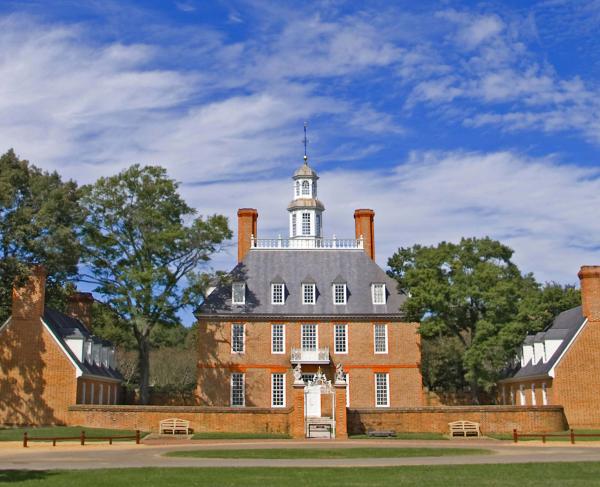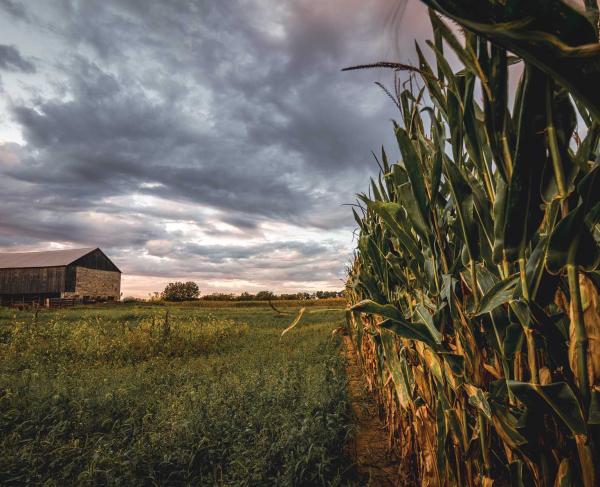Silent Witness
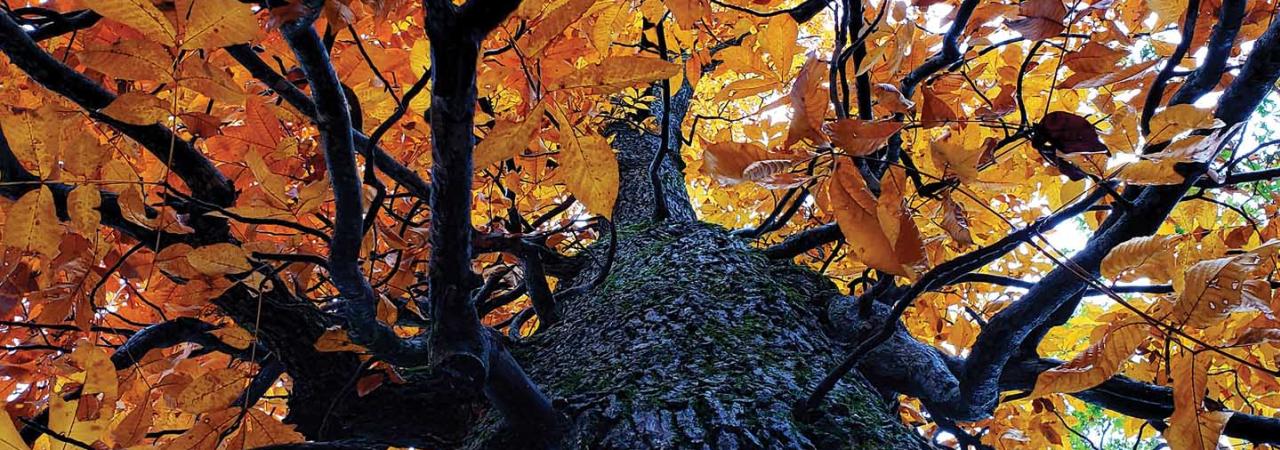
Witness Tree, Cedar Mountain Battlefield, Culpeper County, Va.
Witness trees are those flora that have withstood the test of time — persisting amidst moments that forever changed the trajectory of a nation and its people. Often, they are associated with tragedy and hardship, as silent sentinels that stood by soldiers in the whirl of conflict or provided them cover and shade when a fairly serene second could be sought.
Many of these time-honored trees remain scattered across historic landscapes, providing context for the life-altering events that flitted across the soil they are tied to. And while trees cannot be firmly dated until the rings of their core are counted, foresters can also estimate the age of a tree by considering the average growth factor of its particular species, which are defined and accessible figures. The formula, developed by the International Society of Arboriculture, is simple: multiply the tree’s diameter* by its species’ growth factor. For example, if you wanted to approximate the age of a white oak tree with a 20-inch diameter, you’d multiply 20 by the average growth factor of white oaks, which is five. You’d find that your white oak is roughly 100 years old.
Today’s preserved battlefields, varying in the types and degrees of flora and fauna that cover their ground, create opportunities for the public to admire and learn from wartime witness trees. While the world around these towering guards moved fast and furious, they stood still, soaking it all in.
Brandy Station Battlefield
Fleetwood Hill
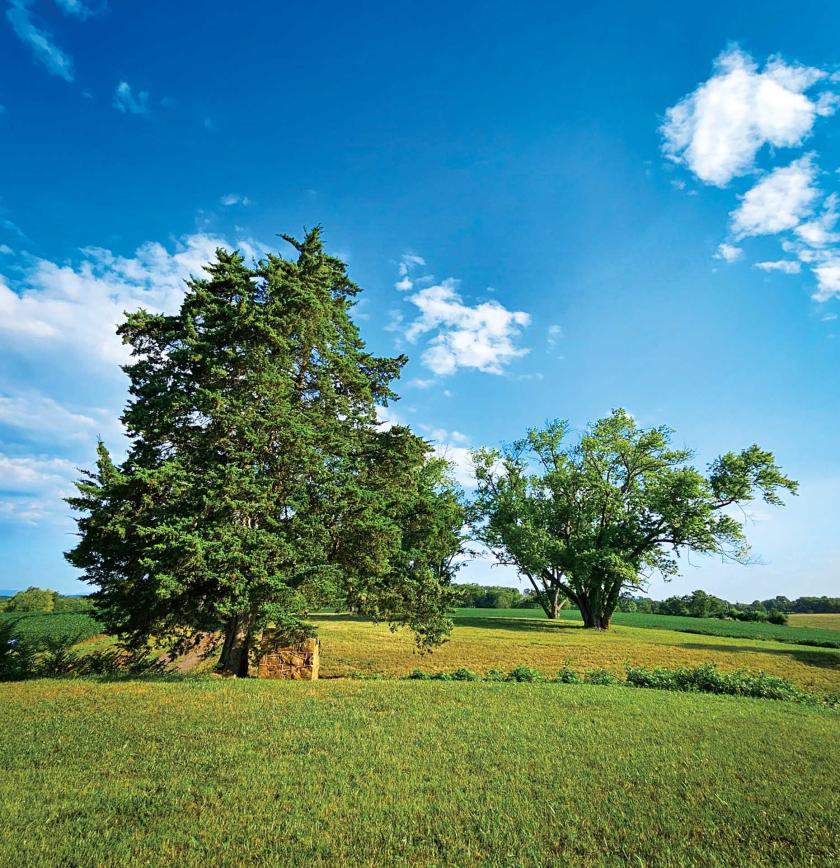
These two tall trees stand upon Fleetwood Hill — the most contested, camped upon and trekked about hallowed ground in the nation. Now, at more than 150 years old, these wooden witnesses on the hill’s northern terminus saw the strategic location covered with soldiers in blue and gray as early as the spring of 1862, when Confederate Gen. Joseph Johnston’s men passed over and camped on its slopes. Several other soldiers followed suit — the grounds experienced a near constant flow of hard-fought actions and dense troop occupation as armies vied for control of the “Rappahannock River Line.” Situated three miles southwest of the river and touching the Orange and Alexandria Railroad on its southern base, Fleetwood Hill was a magnet for wartime activity.
Of the activities that unfurled across the land, mounted combat was frequent. In fact, Fleetwood’s southern end saw more of it than anywhere else in the country. During the June 1863 Battle of Brandy Station, more than 7,000 troopers fought for control of this portion of land in the largest cavalry engagement fought on American soil and beginning of the Gettysburg Campaign. The history of Fleetwood Hill and beyond will be a primary focus as the American Battlefield Trust works alongside the Commonwealth of Virginia to establish Culpeper Battlefields State Park, set to open in June 2024.
Cedar Mountain Battlefield

At Cedar Mountain, you can find oak trees that are estimated to predate the birth of the nation. Two oaks are located near the road heading northwest from General Winder Road near the Crittenden Gate. Another, a chestnut oak, is situated near the old homesite of the Throckmorton family. With a diameter of 14 inches, it is estimated the tree could be around the likes of 300 years old. Meanwhile, a pin oak near the Stonewall Brigade Monument is larger in diameter but younger in age than the chestnut oak... all thanks to the different species’ growth factors!
Eutaw Springs Battlefield
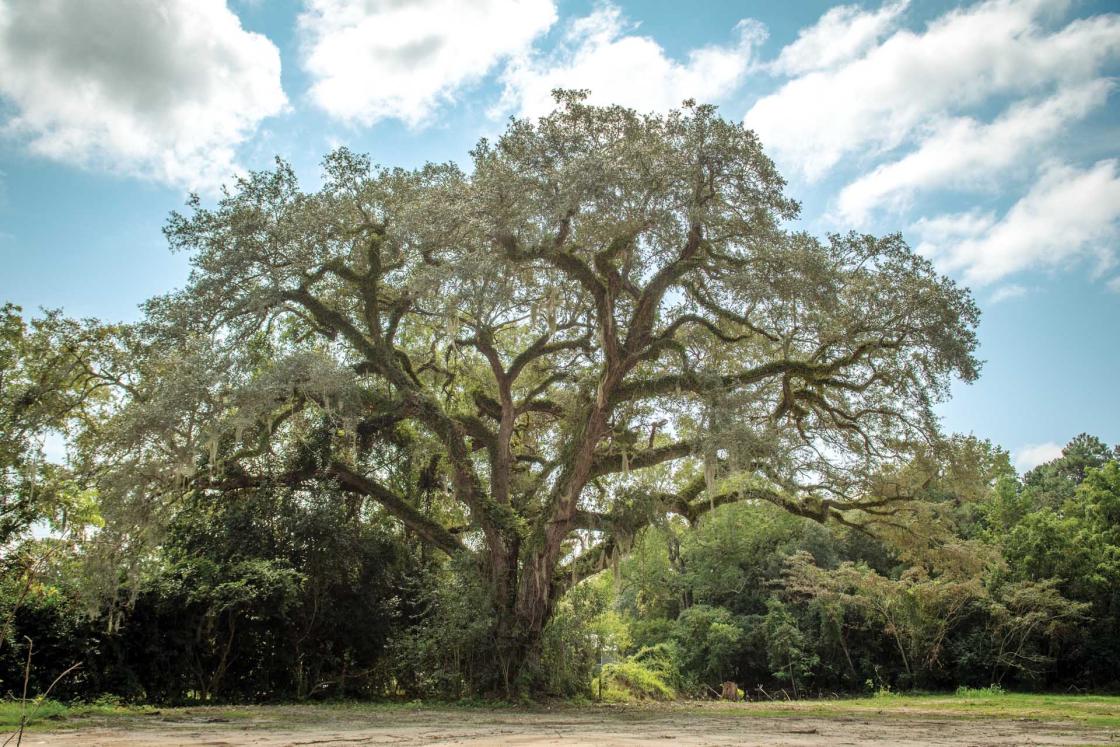
Upon a roughly four-acre tract of land saved by the American Battlefield Trust — in collaboration with its partner on The Liberty Trail, the South Carolina Battleground Preservation Trust (SCBPT) — stands a rather spectacular, centuries-old oak tree. Surrounded by modern features, the imposing tree saw the nation and its people transform through circumstances ranging from shifting ideologies to economic rollercoasters to the unease of warfare. In fact, the oak witnessed soldiers toil over the fate of a new nation during the Battle of Eutaw Springs on September 8, 1781.
After defeat at Camden, S.C, in August 1780, General George Washington appointed Nathanael Greene his new southern commander that following October; and, as it turns out, Greene was just what the doctor ordered. He delivered hefty doses of strategy, tiring General Charles Lord Cornwallis’ forces into North Carolina, leaving Greene to reconquer the South Carolina backcountry. While driving the British from the backcountry and toward the Carolina coast in 1781, Greene’s pursuit of British Lieutenant Colonel Alexander Stewart led to the September clash at Eutaw Springs.
While fighting initially erupted a little over three miles west of the Trust-saved tract during the morning of September 8 — when Greene’s column surprised a British patrol and foraging party — significant maneuvers and combat unfurled upon this land later in the day. All the while, a young oak tree stood as witness to a well-fought battle, after which the Continental Congress recognized General Greene’s exceptional service with one of only seven gold medals given during the war. From a quick glance at the towering flora, one would never know!
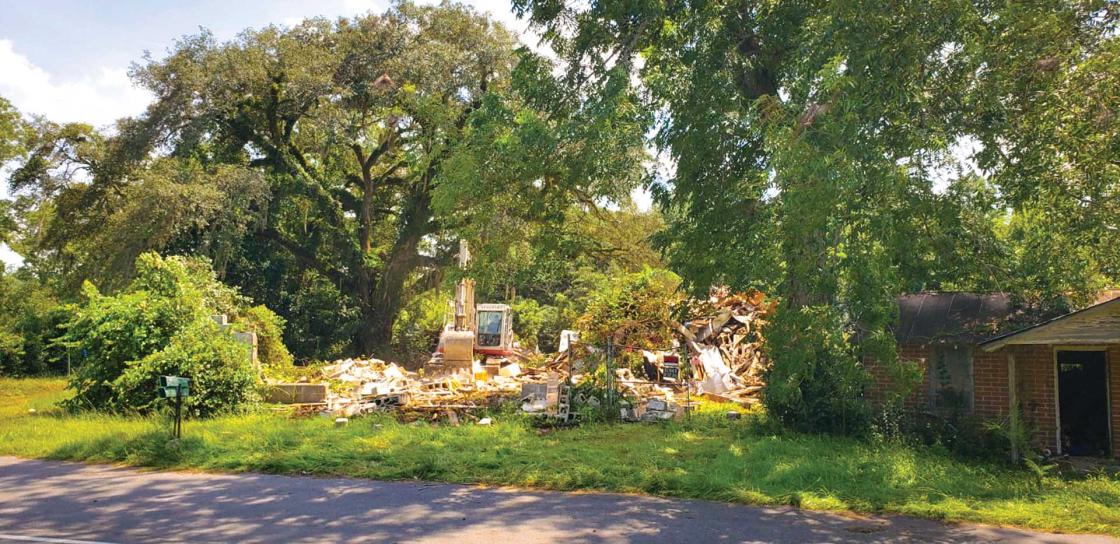
With the SCBPT as the owner and steward of the land, this witness tree is in the process of standing within a restored landscape — one free of modern structures and instead reminiscent of September 1781.
Other Well-Known Witnesses
“Maxwell Sycamore” at Valley Forge, Pa.
As sycamore trees made very poor firewood, troops often left them standing in favor of other arboreal options. This sycamore tree is located off the beaten path near the home that was used for Henry Knox’s headquarters.
“Lafayette Sycamore” at Brandywine Battlefield, Pa.
Approximately 100 years old during the battle, legend grew that the Marquis de Lafayette’s battle wounds were treated under this specimen. It is confirmed that the tree witnessed a Hessian advance and a colonial retreat. After the battle’s conclusion, British forces camped here.
“Manassas White Oak” at Manassas Battlefield, Va.
This tree sits near Stone Bridge and witnessed both the First and Second Battles of Manassas. A photo taken by George N. Barnard in March 1862 shows the tree and the decimated landscape, including the ruins of the bridge.
“Burnside Sycamore” at Antietam Battlefield, Md.
This is perhaps the most recognized witness tree at Antietam and, more than 150 years later, remains an important feature in the interpretation of the site. The tree has survived hurricanes and interference from the bridge itself, but it remains a prominent photographic landmark.
“Sickles Oak” at Gettysburg Battlefield, Pa.
Adjacent to the Trostle Farm at Gettysburg stands a swamp white oak that is said to have witnessed Maj. Gen. Daniel E. Sickles, commander of the Union 3rd Corps, being struck in the leg by a cannonball on July 2, 1863.
* Diameter = a straight line segment that passes through the center of the circle and whose endpoints lie on the circle’s edge
We can save three remarkable battlefield sites if we can raise $201,500. Every dollar you can donate to this cause will be multiplied by $23.80.
Related Battles
12,401
10,316
866
433
2,353
1,338
1,300
587
2,896
1,982
579
882
23,049
28,063
14,462
7,387

